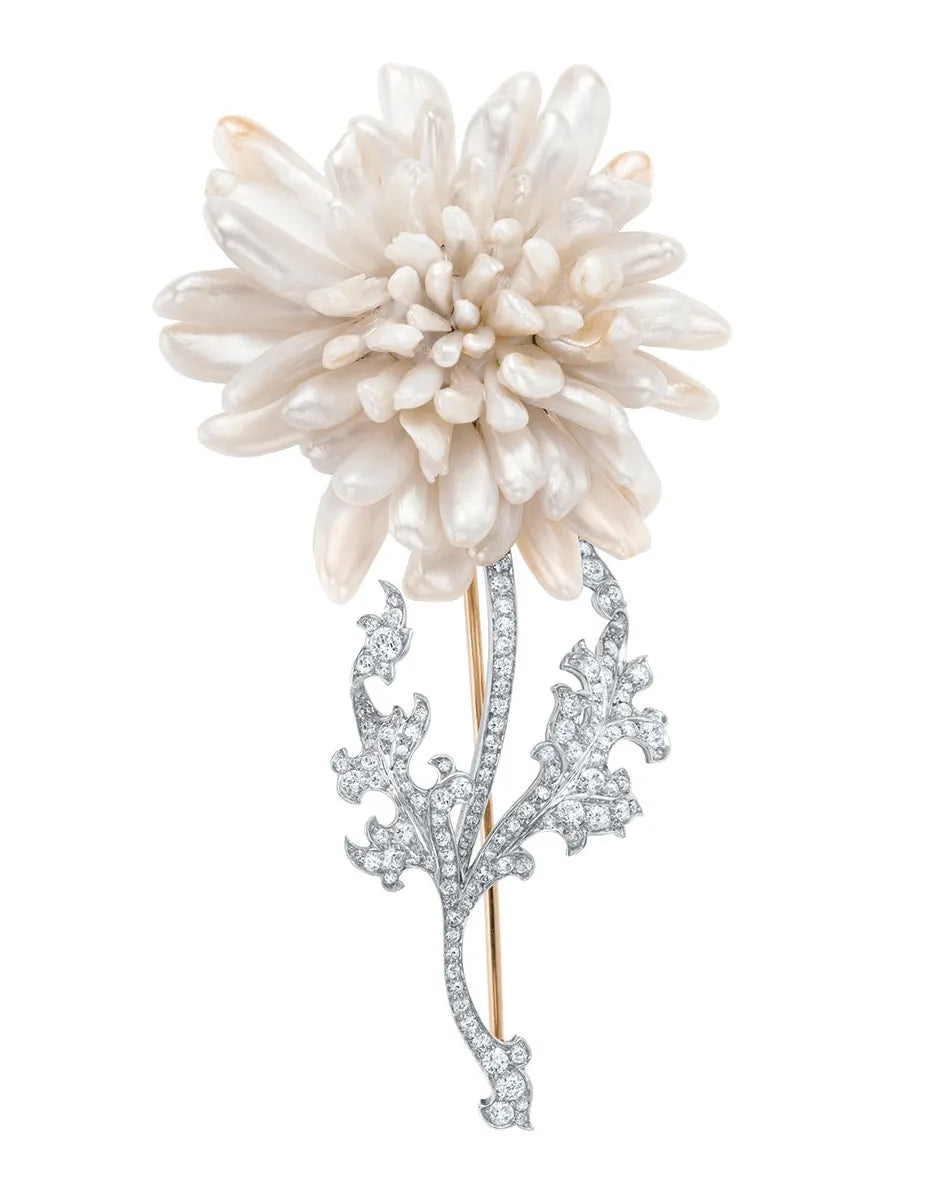In modern times, the United States is known to produce limited quantities of natural pearls, both from saltwater and freshwater. Between 1979 and 2000 it also produced beaded freshwater cultured pearls in the Tennessee river basin. The main pearling activity has been, however, the economically more relevant production of mussel shell, which was historically important as mother-of-pearl for the button industry and as a decorative material for inlays. After the 1950s, the United States became the world’s largest supplier of shell beads ("kaku" in Japanese) that continue to serve as nuclei for the beaded cultured pearl industry from Japan to China, Australia, Indonesia, the Philippines, French Polynesia, Fiji and elsewhere.
Saltwater Pearls
On the East Coast, notably between Cape Cod in Massachusetts and New Jersey, the Mercenaria mercenariamollusc, locally-known as the hard-shell clam or quahog, is known to produce occasional uneven white, cream to deep purple non-nacreous natural pearls with a characteristic surface texture and porcelanous lustre in sizes from 3 to 8 mm, to above 10 mm in exceptional cases. These so-called quahog pearls may exhibit an eye-effect caused by a concentric colour distribution (lighter colour in the centre and darker colour in the rim) and some examples exhibit a rare mosaic pattern.
In the southern state of Florida, the rare non-nacreous pink, salmon to brownish to white natural pearl known in the trade as conch pearls also found as a by-product of the food industry from the local queen conch gastropod (Lobatus gigas, formerly known as Strombus gigas) a rare mosaic pattern. In the southern state of Florida, the rare non-nacreous pink, salmon to brownish to white natural pearl known in the trade as conch pearl. This pearl with a cross lamellar micro- structure and porcelanous lustre has a characteristic surface flame structure that is a known diagnostic feature and occurs in sizes of 3 to 8 mm, rarely larger than 13 mm and being exceedingly rare above 20 mm. Their trade is regulated since the species has been listed in Appendix II of CITES since 1992 mostly due to harvesting for the food industry.
On the West Coast, especially in California, the most relevant pearl producing mollusc is the abalone or ear-shell, notably the red abalone (Haliotis rufescens) and the green abalone (Haliotis fulgens), both edible marine gastropods with a characteristic colourful, iridescent inner shell. These have typical tooth or horn-shapes that are due to their growth not in the mantle, as is the case with most nacreous natural pearls, but in the gonads of the animal and are often hollow. Round abalone pearls are very rare and the largest reported is a 29.95 carat pearl, measuring 18.45 × 17.25 × 15.75 mm, which is not hollow.

Conch pearl and conch shell brooch © Tiffany & Co.

Photo: American Pearl Company
In the mid 1800s, notable finds in New Jersey created a stir and, in the following decades, notably in the early 1900s, a ‘pearl rush’ occurred throughout the territory. Kunz reported that, by 1906, more than 8,500 fishermen were involved in pearling in US rivers and lakes, producing both pearls for the jewellery industry as well as mother-of- pearl mostly for the button industry but also for the marquetry industry. Famous early-20th century jewellery brands like Tiffany & Co used North American freshwater natural pearls in their creations, like the one depiced in the opening photo of this article representing the iconic chrysanthemum brooch made in ca. 1904 featuring elongated natural pearls from US freshwater reservoirs. René Lalique, the notable Art Nouveau jewellery artist, has been referred by many authors to as another user of American freshwater pearls.

It has been suggested that the French jewellery artist René Lalique used American freshwater natural pearls in his creations © Fundação Calouste Gulbenkian

The famous 1904 Chrysanthemum brooch by Tiffany & Co. featuring diamonds and freshwater natural pearls from the USA © Tiffany & Co.


